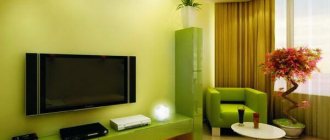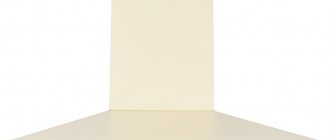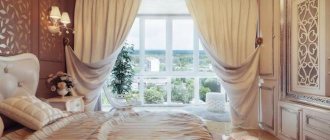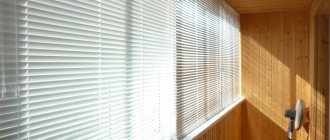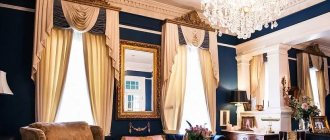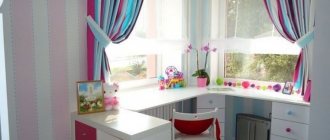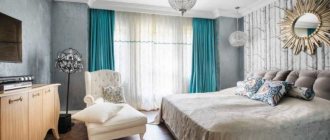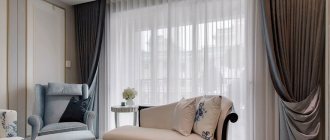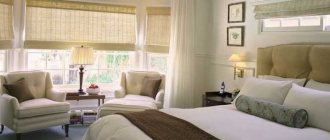Decorating a hall with fabric curtains gained popularity back in the Renaissance and has come to us through the centuries. Today, when decorating a room, you can show your imagination, turning your wildest desires into reality.
But before you start hanging the window, you need to decide on the style of the room, the overall picture of the space and the view from the outside. After completing all the points, you can start choosing curtains. This is where some questions will arise about which option is most suitable for decoration.
A curtain is a piece of fabric of different textures and sizes that is hung above a window or doorway. They are intended to protect the room from sunlight, or for designer decoration of the room. Quite often, curtains of this type are used instead of blinds, closing the windows at night so that personal life does not extend beyond the expanses of the house.
Fabric that is not see-through is the ideal solution. It can be of different draperies, textures, colors and styles. To attach the curtains, you need a cornice that is installed above the window.
Curtains come in different types:
- Classic ones have not lost their relevance for several centuries, because they create a feeling of warmth and comfort.
- Lambrequin - used mainly to decorate the upper part of the window opening, attached horizontally above it.
- Rolled, wound on a roller. When open, they are practically invisible, but when closed, they visually resemble a smooth screen.
- Bamboo is a more exotic option; it is highly resistant and does not react in any way to changing weather conditions.
- Awnings are designed for large windows and can be mounted not only from the outside, but also from the outside. There are mechanical and electrical, controlled using a drive system.
- Roman blinds are a continuous fabric that folds upward to form even folds. The wave effect fits clearly into the interior and gives it a special charm.
Curtains
When you call the pieces of fabric that decorate a window “curtains,” you can’t go wrong: this is a general name that includes all types of curtains, different in type of fabric, style, fastening or principle of use. Roller blinds or Roman blinds still belong to this concept, despite the fact that they fall onto the window and do not move along the cornice. We talked about what types of curtains there are in general here.
Definition
First, let's find out what the names themselves mean. So, curtains are a lightweight, usually large-sized curtain. Here is one option for such a product:
Curtains
In turn, “curtains” is a very broad, collective name for all kinds of curtains (including curtains), made mainly of fabric.
Curtains
All samples of this type help create a comfortable atmosphere in the room and evoke a feeling of completeness of the interior. Meanwhile, there is a noticeable difference between curtains and curtains, or rather, from other varieties of such products. First of all, this concerns the fabric used. Curtains are made from tulle, organza, chiffon or other loose, delicate, often patterned material. That's why they look very airy.
The impression of lightness is also determined by the traditional colors of the curtains - white or made in soft, pastel colors. Such curtains make the room not only more elegant, but also more fun. After all, through their translucent material, flowing streams of light freely penetrate into the room.
Often a curtain is a large piece of fabric that occupies the entire opening and reaches all the way to the floor. In this case, the curtain is usually static and never moves, decorating the window at any time of the day. Some products consist of two equal canvases, which can be separated to the sides if desired. There are also models of curtains that partially cover the opening, perhaps in the form of an arch. They are suitable, for example, for the kitchen, where the housewife sometimes stores some equipment on the windowsill.
What is the difference between curtains and curtains other than them? The fact is that the latter are made of denser, non-translucent materials. For example, a massive option for window decoration is a curtain. In addition, openings are decorated, for example, with Roman, roller or classic curtains. Models can have original colors and textures, and can also be complemented with lambrequins and other decorative elements.
However, curtains often cover the window all day. Meanwhile, the rest of the curtains during daylight hours, if there is no need to protect from the sun's rays hitting the eyes, usually frame the opening only on the sides or rise to the required height. At the same time, in the evening they are closed, thereby escaping views from the street. Since curtains do not allow light to pass through, they are also used instead of partitions to delimit space. Curtains are not suitable for such a function.
The above can be supplemented by the fact that any individual curtain options are sometimes “single-handedly” located in the opening. At the same time, window decoration is often a stylish composition, which includes both amazing weightless curtains and more substantial, spectacular curtains of a different variety.
Curtains
Curtains are a type of curtain made of soft, loose, often even translucent or transparent material (voile, tulle, organza, mesh). Curtains can cover the window partially or completely and consist of one sheet or several. If there is only one canvas, it can be draped over the cornice and cover part of the window without ever having to be removed.
Two panels (or more) will move if the window needs to be closed, and move apart if it needs to be open to view. To do this, curtains need special fastenings: “Methods of fastening curtains to the cornice.”
Curtains will never completely block light. For example, the familiar tulle, one of the types of curtains, performs a decorative function, only slightly scattering the light.
Flower power for lively and energetic arranging
If you prefer more expressive combinations and want to decorate an interior that radiates energy and joy, focus on window decoration in a more vibrant style. But what is the best way to achieve this effect - with the help of curtains, curtains or blinds? The choice depends solely on your interior idea.
An interesting solution would be to combine snow-white curtains with brightly colored curtains, such as dark red, green or purple. Such a contrast will give the interior more life and make it stand out against the backdrop of monotonous arrangements.
With such a bold duo, allow yourself a touch of freedom when choosing other interior items. Wooden shelves or chests of drawers of interesting shapes, colorful pillows, unusual paintings - the combination of these accessories will make your interior radiate joy and positive energy.
Blinds will also work well in a minimalist style. Choose an option with intriguing patterns, hang decorative lamps or light bulbs in the room - the effect of joy in the interior is guaranteed!
To sum it up: home window treatments play an extremely important role in the interior, adding an interesting accent to every arrangement. Regardless of which solution you choose (curtains, curtains or blinds), it will help you create a unique, attractive interior for the rooms of your home.
Did you find this article helpful? Please share it on social networks: Don't forget to bookmark the Nedvio website. We talk about construction, renovation, and country real estate in an interesting, useful and understandable way.
curtain
Initially, drapes were called curtains that covered a doorway, but now this term is more often used for window curtains made of thick, opaque fabric or lined fabric. Curtains look impressive and voluminous and can completely block the light from the window. It is the density that is important here, not the weight: curtains can be made from both heavy fabrics (velvet, tapestry, jacquard) and light ones (cotton, linen, viscose, natural silk).
Two vertical curtains are often combined with a lambrequin - this is the name of the horizontal decorative element for the top of the window. Read more about the types of lambrequins in this article. It is the curtains that are customary to rhyme with the rest of the textile elements of the room, making bedspreads and pillow covers from the same fabric.
Colors and patterns
Curtains can be either plain or mixed (color combinations, patterns, etc.).
The following shades are common:
- beige;
- blue;
- grey;
- eggplant;
- golden;
- brown;
- green, emerald, turquoise;
- pistachio.
All-white curtains look uninteresting. In this case, you can choose light curtains with patterns, for example, with floral patterns, figures, etc.
Double products look stylish if the color of the curtains is in harmony with the shade of the lining.
The most successful combinations:
- beige + chocolate;
- gray + blue;
- white + red;
- gray + light pink;
- yellow + brown, etc.
Curtain
This word usually causes the most confusion among all terms. Some people consider curtains to be synonymous with sliding curtains, which is quite possible: “curtains” is a Russian word, while “curtains” is a tracing-paper from French.
Most often the word is used when they want to mean:
- Short curtains up to the window sill maximum
- Kitchen curtains
- Very simple curtains made of loose, inexpensive fabric, rustic curtains
- Curtains or hanging structures (for example, fishing lines with beads) that fence off areas in the room
Latest fashion trends
Fashion trends in textile interior design for 2020-2021:
- Eco-friendly fabric. Products made from natural materials are preferred.
- Dim colors. Stylists advise choosing curtains in natural colors (walnut, gray, blue, etc.).
- Strict style, lack of overload with details.
- Two-color curtains.
- Patterns: floral and abstract.
- Photocurtains with volumetric effect (3D).
Now the trend is combined curtains with additional lifting mechanisms. Designers pay attention to finishing the curtains along the edges using a different fabric.
Jewelry and accessories
To decorate curtains, use the following accessories:
- Decorative ribbons. They are sewn on the top of the product.
- Buttons - metal, wood or fabric.
- Ties. They can be in the form of bows or hanging knots.
- Fairy lights. Using lightweight fabric, you can create a hanging train that adds sophistication to the interior.
- Clips, brooches, clips. These embellishments can be sewn on or secured with magnets.
- Pompoms made of threads.
- Fringe brushes.
- Applications. They can be used to decorate curtains in a children's room.
Wall decorative cornice Vityaz
Check the best offers >>>
- length up to 4 meters;
- for any interior style;
- wear-resistant galvanic coating of rods.
The leader among designer curtains is a model that will decorate the interior. For a classic, modern style, you can choose a barbell with a flat surface. For modern, Provence or antique design - with a carved pattern. The galvanic coating reliably protects the metal from scratches that can be caused by curtain rings.
For wall mounting there is a durable bracket and a set of dowels and nails. To prevent the rings from jumping off the rod, you need to screw metal tips onto the ends. Disadvantages include very high prices and the absence of rings in the set.
If you are choosing the most convenient cornice for your office, for a spacious hall, living room or bedroom, we recommend a model from the Vityaz brand. They look very stylish and solid. But they are only suitable for light curtains; under very heavy rods they can become deformed.
Reviews
It’s convenient that you can choose a model for two or three layers of curtains. For a rod longer than 2.4 m, the kit includes an additional bracket, which adds strength to the structure. But the model is available in only two colors: silver and bronze.
Behind:
- completely made of steel;
- durable coating;
- you can choose rods in different styles;
- length from 140 to 400 mm.
Against:
- Expensive;
- small selection of colors.
